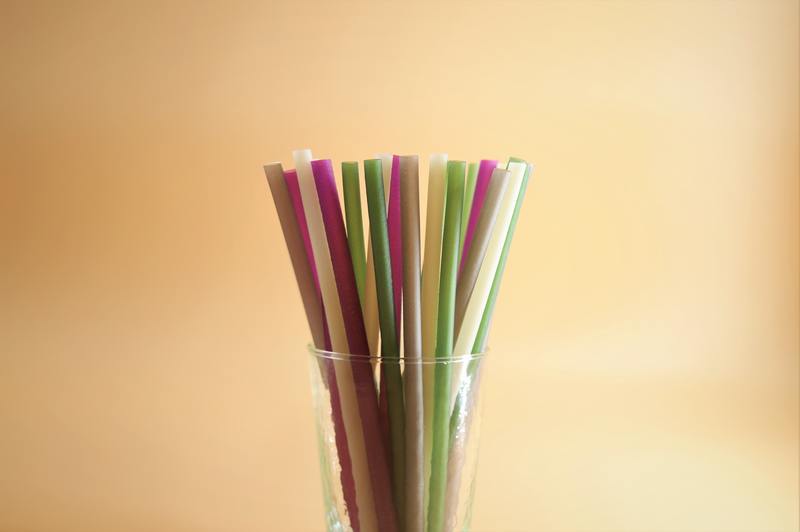It is undeniably enjoyable to have a refreshing drink once in a while, but no one is an exception to learning how to get mold out of a straw. This specifically happens when you own a plastic straw — after all, that is the most convenient to use than metal and glass straws.
Metal straws, given their material, can give an unpleasant aftertaste that apparently makes you question your taste buds. Glass straws are also a big no-no as you can easily shatter them with a few wrong moves.

Plastic straws are clearly the most easy-to-use, not to mention the most disposable. However, with the burning heat of the sun encouraging mold growth, the interior of your plastic straw may serve as a potential breeding ground for molds.
Mold in straw is caused by food particles and water coming into contact with the inside of the straw. The particles become stuck inside, where mold might grow.
That moldy water you’ve been consuming will be killed by your stomach acid, but get it washed out as soon as you realize it. If you want to know what happens when you consume mold, here’s an article on what happens when you drink mold and four ways on how to avoid such.
What To Do Before The Cleaning
No matter the size of the mold contamination, it is essential that you follow safety precautions before dealing with molds. This is because they are still known for triggering allergic reactions and causing respiratory issues.
Clad yourself at least with gloves and an N-95 mask. If you happen to be extremely immunocompromised, leave the cleaning to someone else in the household or to a mold remediation specialist.
How To Remove Mold From A Straw
You do not have to worry about the process though. It is an easy-peasy task that you could do with a few steps!
Step #1. Soak the straw
Run hot, soapy water on your kitchen sink halfway and submerge the moldy straw. If required, place a heavy dish on top of the straw to maintain it immersed.
To dislodge the mold, immerse the straw in soapy water for about 10 minutes.
Step #2. Run tap water
Take the plate from the soapy water, as well as the straw. To clear any larger particles of mold, run clean warm water from the tap through the straw.
Remove the soapy water from the kitchen sink.
Step #3. Using a pipe cleaner
Warm water should be used to dampen a chenille or terry cloth pipe cleaner. Make sure the pipe cleaner is as straight as possible.
Through this, it will be easy to push it through the straw many times to eliminate any remaining mold.
If the first pipe cleaner is too tiny to wash the straw adequately, use a wider pipe cleaner or one covered in a non-pilling cotton towel. This option also makes the cleaning process easier.
Step #4. Rinse until completely done
Rinse the straw, pipe cleaner, and cloth repeatedly under the sink faucet with warm water. Continue to push the pipe cleaner through the straw until there is no mold remaining inside.
How To Prevent Mold Buildup In Straws
Even hot water and soap won’t eradicate all bacteria. To eliminate all bacteria and fungal spores, sanitize the bottles and straws once a week with chlorine bleach or filtered white vinegar.
Fill a tidy sink or dishpan with one gallon of hot water for using a spoonful of chlorine bleach. Allow the containers and lids to soak in the mixture for five to fifteen minutes.
Let them air dry after rinsing with hot water.
If you don’t want to use bleach, add two tablespoons of distilled white vinegar with one cup of hot water. Prepare enough to fill the water bottle plus sufficient to saturate the lids.
Fill the bottle with water and set it aside for 15 minutes. Allow to air dry after emptying and thoroughly rinsing with hot water.
When you’re done with a reusable straw while on the road, the best action you can do is “rinse” it by drinking plain water or putting it under a running water tap. When you go home, it will still require to be thoroughly cleaned.
If you’re short on time and can’t obtain a brush, clean a reusable flexible straw with dental floss. To remove filth, thread floss through the straw, dunk it in soapy water, and pinch and press the straw, and floss together while it absorbs.
You have to give extra attention to what you drink especially since some molds such as white water molds are harder to recognize. The danger becomes higher when you have ingested it.
Conclusion
Knowing how to get mold out of a straw comes in handy especially when you love drinking. However, molds are not picky with their homes, so your little straws will be no exception.
Just be sure to keep the tips on your mental notes and you’ll surely be happily sipping!
